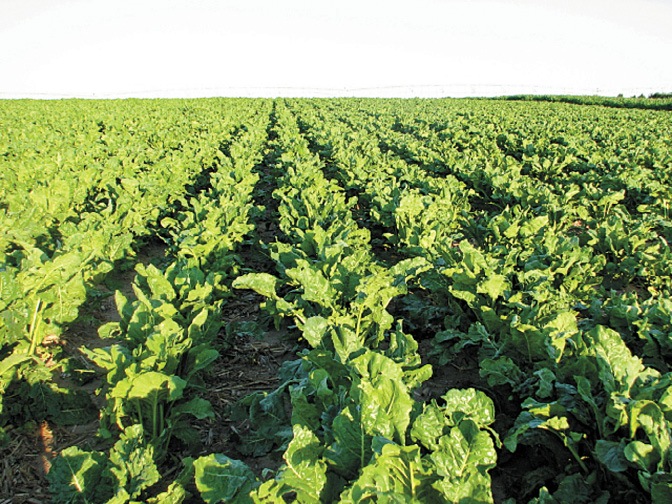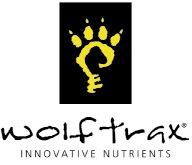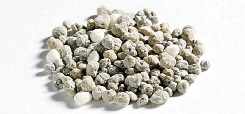 All growers can be helped by Wolf Trax Dry Dispersible Powder Micronutrients.
All growers can be helped by Wolf Trax Dry Dispersible Powder Micronutrients.
"Any crop can be short of any micronutrient," said Mark Goodwin, Wolf Trax director of research and development. "You can have sugarbeets that are short of any of the micronutients."
Shortages might appear for zinc, boron, manganese, iron and copper.
Goodwin said boron, for example, plays a critical role in cell wall formation. When sugarbeets are low on boron, yield and quality can be impacted.
When scouting sugarbeet fields, growers should keep a watchful eye for manganese and boron deficiency. These two micronutrients are the most common deficiencies seen in Michigan's lake bed soils. Sugarbeets are considered a highly responsive crop to manganese if nutrient concentration is low and deficiency symptoms are seen.

Symptoms of manganese deficiency normally occur as chlorosis in the younger leaves and can be seen as netted veining viewed against the light. As severity of the symptoms increase, leaf blades on deficient plants can fade from green to a uniform yellow with a metallic grey-to-purplish luster.
Boron deficiency symptoms in sugarbeets first occur as white, netted chapping of upper blade surfaces or witting of tops. Later, if deficiency becomes severe, transverse cracking of petioles develop; the new leaves in the growing point may turn black.
More efficient micronutrient applications help ensure growers' crops get the nutrients they need.
Wolf Trax founders Kerry Green and Geoff Gyles gave a boost to all growers when they developed DDP Micronutrients in the 1990s. The company's headquarters are located in Winnipeg, Manitoba, Canada. By combining common-sense thinking and scientific know-how, they created a line of products that established an entirely different class of micronutrients.
Micronutrient fertilizers are an increasingly important component in maximizing crop production in America and across the world. Older granular micronutrient products made applications inefficient and often ineffective. Because micronutrients are needed in small amounts, their concentration in a fertilizer blend is tiny compared to macronutrients like nitrogen, phosphorus and potassium. When spread in a field with the fertilizer blend the traditional granular micronutrients were sparsely distributed. Many plants could not then access the needed nutrient.
 Green and Gyles developed DDP Micronutrients that feature a patented, scientifically-engineered coating technology that's formulated to coat and stick to each prill of dry nitrogen, phosphorus or potassium fertilizer. This results in even, blanket-like coverage of micronutrients across a field.
Green and Gyles developed DDP Micronutrients that feature a patented, scientifically-engineered coating technology that's formulated to coat and stick to each prill of dry nitrogen, phosphorus or potassium fertilizer. This results in even, blanket-like coverage of micronutrients across a field.
Goodwin refers to this as piggybacking into the field. "That gives you so many more points of contact," he said.
Wolf Trax's patented Dual Action Technology provides nutrients that are available immediately, as well as extended feeding over time.
"DDP Micronutrients represent the first significant innovation in micronutrient technology in decades," said Green, Wolf Trax managing director. "No other product resembles our technology. We are proud of where we have come and know there are still uses and applications for our patents that can contribute to helping farmers farm more efficiently and effectively."
DDP technology ensures that micronutrients are distributed throughout the root zone, providing many more interception points for roots to access micronutrients compared to traditional granular micronutrients.
Wolf Trax DDP is designed to feed your current crop, not the soil. The application strategy of Wolf Trax DDP Micronutrients is to evenly apply the needed amount of micronutrient for that crop in a usable form.
It's imperative growers take advantage of soil analysis before any application of nutrients.
"Analyze each soil and work from there," said Jeff Baublits, Wolf Trax agronomist. "It's very essential so vitamins and nutrients are working at their optimum level."
Yet not every grower works with a certified crop advisor.
"That's a huge shortcoming," Baublits said. "You may have just wasted $1,000, because you didn't know the pH of your soil. You really need to get that soil test done."
Another useful tool for growers is variable rate technology. Factors that influence crop productivity can be identified, mapped and used by computer software to provide an implemented solution. Field level precision opens the way to better manage variations where previously, in terms of treatments, a field was normally assumed to be homogeneous. Foliar-applied micronutrients can be used more efficiently.
Precision farming and variable rate technologies use spatial databases within field environmental and management variables with the aim of equalizing the application of field inputs while maximizing production across the entire field.
"VRT is really fantastic," Baublits said. "That's the future of farming. You can really decrease costs in the long run. Decreasing the unit cost creates more profit because of less overhead."
When applied as a coating on granular, prilled fertilizer, Wolf Trax micronutrients are available to the crop the instant the crop accesses the nitrogen, phosphorus and potassium fertilizer. This represents a revolutionary leap ahead of old-style, granular products, where it can take weeks for the crop to "find" sparsely spread "chunks."
With DDP Micronutrients, root to nutrient contact is no longer left to chance. DDP Micronutrients stay coated on the prills during blending, handling and application to the field. All fertilizer blends can be coated, including urea.
Baublits formerly worked as an agronomist for Grimmway Farms overseeing 30,000 acres in California and Colorado.
As last year's drought across much of the United States aggressively attacked record yield projections, limiting crop loss by managing stress via micronutrient applications became an over-arching theme of the season.
Increased use of micronutrients is expected as growers proactively try to protect future yields against loss. In fact more focus will be placed on avoiding yield loss rather than increasing yields.
Wolf Trax also predicts an increased demand for micros.
As commodity prices continue to trend upward, micronutrient use will likely continue to grow in prominence.
With the uncertainty in the market about supplies of granular zinc, Green said many dealers switched to the product line as a fertilizer coating. New customers liked how easily the DDP technology coated dry fertilizer when added to the blend-as well as the quality and consistency of the blend.
Wolf Trax is adding magnesium to its innovative DDP nutrient portfolio for the 2013 season. Magnesium DDP is designed to address magnesium deficiencies that growers may face in producing crops.
"Our customers have been asking for a better way to apply magnesium to crops. We are seeing significant early crop growth response to Magnesium DDP," Green said.


